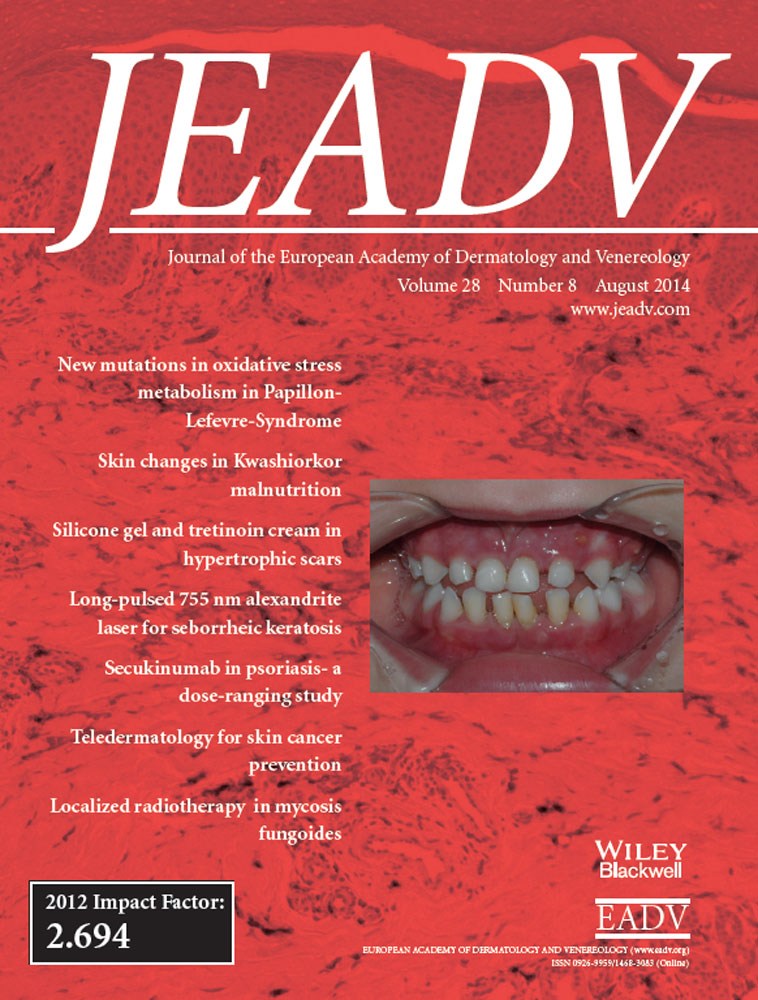Detection of factor XIII-A is a valuable tool for distinguishing dendritic cells and tissue macrophages in granuloma annulare and necrobiosis lipoidica
Conflicts of interest
None declared.Funding sources
This work was supported in part by National Research Funds OTKA K81847 R.A., and PD101557 (D.T.) and by the TÁMOP 4.2.2.A-11/1/KONV-2012-0031 projects. D.T. is a recipient of Bolyai János Fellowships of the Hungarian Academy of Sciences and Szodoray Lajos Prize of the University of Debrecen and holds a BMC grant from South Korea.Abstract
Background
Factor XIII subunit A (FXIII-A) is used as a diagnostic marker in a wide range of dermatological diseases ranging from inflammatory lesions to malignancies, although neither the cell types responsible for its expression nor the mechanism(s) resulting in its local accumulation in pathological conditions have been characterized.
Objective
In this study, we aimed to gain information on the cells showing an immunohistochemical reaction for FXIII-A and answer the question whether macrophages and/or dendritic cells are labelled for FXIII-A.
Methods
We carried out our studies on samples of granuloma annulare (GA) and necrobiosis lipoidica (NL), the prime examples for granulomatous skin lesions with a non-infectious background in which extracellular matrix remodelling is a key feature without any sign of malignant transformation. We used markers for macrophages and dendritic cells in combination with the detection of FXIII-A in double labelling immunohistochemical reactions.
Results
We demonstrated that FXIII-A positivity clearly distinguishes macrophages (CD163+/FXIII-A+) from dendritic cells (CD11c+/FXIII-A−) not only in the normal dermis as previously described by Zaba et al. (J Clin Invest 2007; 117: 2517–2525) but also in the pathological conditions of GA and NL. Detecting the expression of DC-SIGN/CD209 and mannose receptor molecules on FXIII-A+ macrophages we confirmed that FXIII-A is expressed in the alternatively activated macrophages. However, while DC-SIGN/CD209 was invariably expressed on FXIII-A+ cells both in normal and pathological conditions of GA/NL (98.7% vs. 93.5/96%), mannose receptor was only partially coexpressed with FXIII-A (94.8% vs. 74.7/52.2%), suggesting that FXIII-A+ macrophages do not represent a homogenous population.
Conclusions
FXIII-A selectively marks macrophages and distinguishes them from dendritic cells. The presence of FXIII-A is not a disease-specific marker but indicates a possible common mechanism of macrophage activation in various dermatological diseases.




